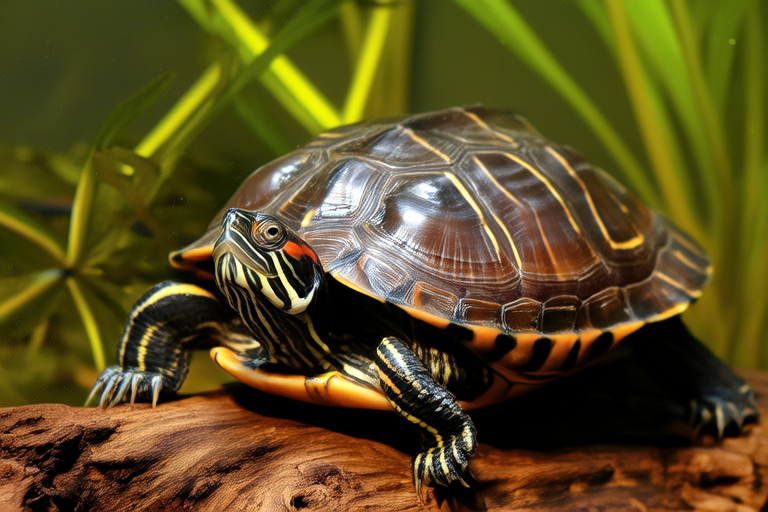The Ultimate Guide to Caring for Your Red-eared Slider Turtle
Habitat Setup
Creating an optimal habitat for your red-eared slider turtle is crucial for their health and happiness. The first consideration is the tank size. Juvenile turtles require at least 10 gallons of water per inch of shell length, while adults need about 40 gallons per inch. A larger tank allows for more swimming space and reduces stress.
Water quality maintenance is vital. Regularly change the water to prevent bacterial growth. Use a water filter to keep the water clean and add a dechlorinator to neutralize harmful chlorine. Ensure the tank has a secure lid to prevent escapes and keep curious hands out.
UV lighting is essential for vitamin D synthesis and calcium absorption. Use a full-spectrum UVB light placed within 12 inches of the basking area. Replace the bulb every six months or as recommended by the manufacturer. A heat lamp provides warmth, with the basking spot reaching 85-90°F. Nighttime temperatures should be around 70-75°F.
Diet and Feeding
Red-eared sliders are omnivores, requiring a balanced diet of proteins, vegetables, and occasional fruits. Juveniles need more protein than adults. Offer commercial turtle pellets, fresh greens like romaine lettuce, and occasional treats such as earthworms or feeder fish. Feed young turtles daily, reducing to every other day for adults.
Nutritional needs include calcium for strong bones and shells, and vitamins for overall health. Dust food with a calcium supplement twice weekly and provide a multivitamin once a week. Avoid iceberg lettuce and spinach due to low nutrient content and potential calcium-binding properties.
Handling and Health Care
Handle your turtle gently, supporting its body fully. Wash your hands before and after handling to prevent the spread of bacteria. Regular check-ups can catch issues early. Signs of illness include lethargy, loss of appetite, swollen eyes, or discolored skin.
Common diseases include respiratory infections, shell rot, and parasites. Seek veterinary help if you notice any concerning symptoms. A veterinarian specializing in reptiles can provide the best care and advice.
Safety and Well-being
To ensure your turtle’s safety, cover the tank to prevent escapes and provide hiding spots. Supervise children when interacting with the turtle to avoid mishaps. Growth stages vary; juvenile turtles grow rapidly, slowing as they reach adulthood. Behavioral insights include basking, swimming, and foraging. Understanding these behaviors helps in creating a stimulating environment.
Growth Stages and Behavioral Insights
From hatchlings to adults, each stage presents unique challenges and joys. Hatchlings require more frequent feeding and closer monitoring of water quality. As they grow, their dietary needs shift from protein-heavy to a more balanced diet. Understanding these changes aids in providing appropriate care.
Behavioral insights reveal that turtles are active during daylight hours, spending time basking and swimming. They may become territorial, especially males during breeding season. Recognizing these behaviors helps in maintaining a peaceful tank environment.
Conclusion
Caring for a red-eared slider turtle is a rewarding experience. By setting up a suitable habitat, providing a balanced diet, and understanding their health and behavior, you can ensure your turtle thrives. Remember, proper care takes commitment but brings lifelong companionship. Enjoy the journey of nurturing these fascinating creatures.
